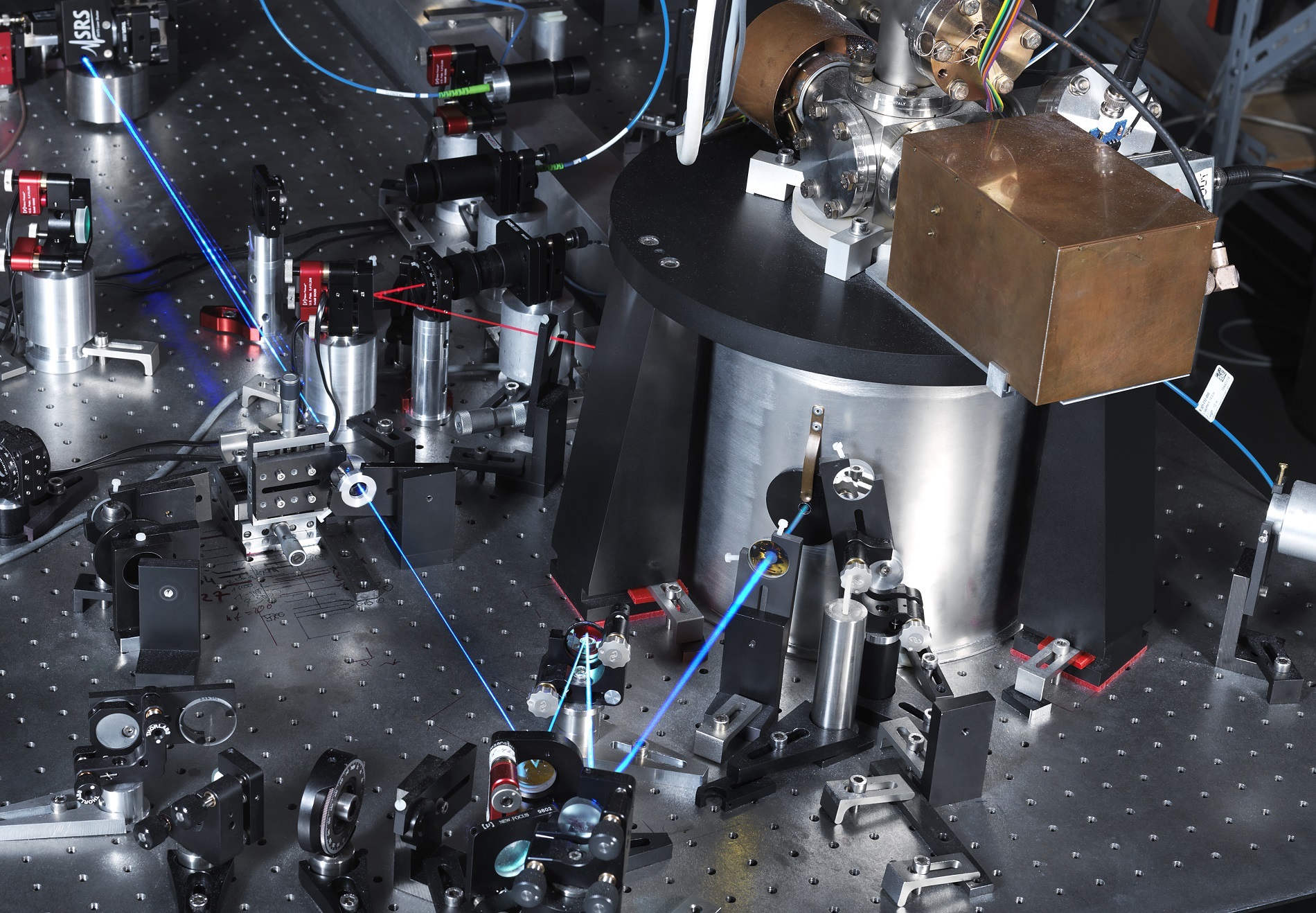31.01.2018
Optical atomic clocks "tick" at the unimaginably high frequency of laser light – nearly 1015Hz. Suitable measurement procedures must ensure that the laser frequency is stabilized automatically and exactly to match the unperturbed transition frequency between two atomic energy levels. To avoid perturbations, the reference atoms are kept under vacuum in custom-made traps to ensure they are protected as well as possible from external influences during laser excitation. The transition frequency can, however, also be disturbed by the interaction between the atoms and the exciting light. In the current issue of the scientific journal "Physical Review Letters", researchers from the Physikalisch-Technische Bundesanstalt (PTB) in Germany describe a new experimental procedure that allows perturbations due to the excitation of the atoms to be completely eliminated. The procedure's efficiency has been demonstrated by means of comparison measurements between two 171Yb+ single-ion clocks.
The groundbreaking idea of exciting atoms with two radio-frequency pulses or light pulses that are separated by a dark period stems from Norman Ramsey (Nobel Prize in physics in 1989). In essence, the first pulse triggers an oscillation between the atomic states. The second pulse serves to check whether the frequency of the laser and that of the "free" atomic oscillation were the same during the dark period or whether a phase difference has developed between the atom and the laser. The longer the dark period, the more exact the atomic resonance signal becomes, and measurement errors due to the short interaction of the atoms with the laser light are reduced. Due to these advantages, clocks such as cesium fountain clocks – with which the SI unit of time, the second, is presently realized – rely on a Ramsey excitation scheme in the microwave range.
Atomic clocks with a reference transition in the optical spectral range are now approximately a hundred times more accurate than the best cesium clocks. In certain systems, the conventional Ramsey scheme is no longer sufficient for making the remaining effect of the interaction between the atoms and the laser pulses or other perturbations associated with the excitation negligible. The excitation scheme that has now been developed at PTB solves this problem by modifying two features of the Ramsey scheme: firstly, besides measurements with a long dark period, measurements with identical pulses and short dark periods are carried out. Secondly, an adjustable phase correction can be performed for the second pulse, which is the same in long and in short measurement sequences.
In fact, these two measures are sufficient for completely avoiding disturbances due to the interaction between the light and the atoms. The results of measurements with a long and a short dark period are equally influenced by such perturbations. It would thus be possible to use the measurement result of the short sequence as a correction for measurements with long sequences and to stabilize the laser frequency by means of the resulting signal. In this case, however, a phase difference remains between the atom and the laser that, in the event of frequency fluctuations of the laser, leads to an asymmetrical behavior of the frequency control system and thus to an incorrect control response. However, if the phase correction is used and adjusted in such a way that the phase difference determined during the short measurement sequence is compensated for, then the long measurement sequences will provide an error-free signal with which the laser frequency is stabilized to match the unperturbed atomic transition frequency.
The PTB researchers have verified the advantageous properties of the new excitation scheme by comparing two single-ion clocks based on a transition in 171Yb+ whose frequency experiences a strong shift due to the exciting laser light. One of the clocks was operated according to the new excitation scheme, and variations in the light shift and changes in the pulse shape were introduced on purpose; these variations and changes were greater by several orders of magnitude than the perturbations expected under normal operating conditions. The output frequency of the clock, however, remained unchanged within the relative statistical uncertainty of the comparison of approx. 1 × 10-16. Since excitation schemes of the Ramsey type are used in a wide range of high-precision measurements, applications other than the Yb clock are certain to benefit from this new method.
es/ptb
Scientific publication
Christian Sanner, Nils Huntemann, Richard Lange, Christian Tamm, Ekkehard Peik: Auto-Balanced Ramsey Spectroscopy. Physical Review Letters 120, 053602 (2018)
Author: Erika Schow















